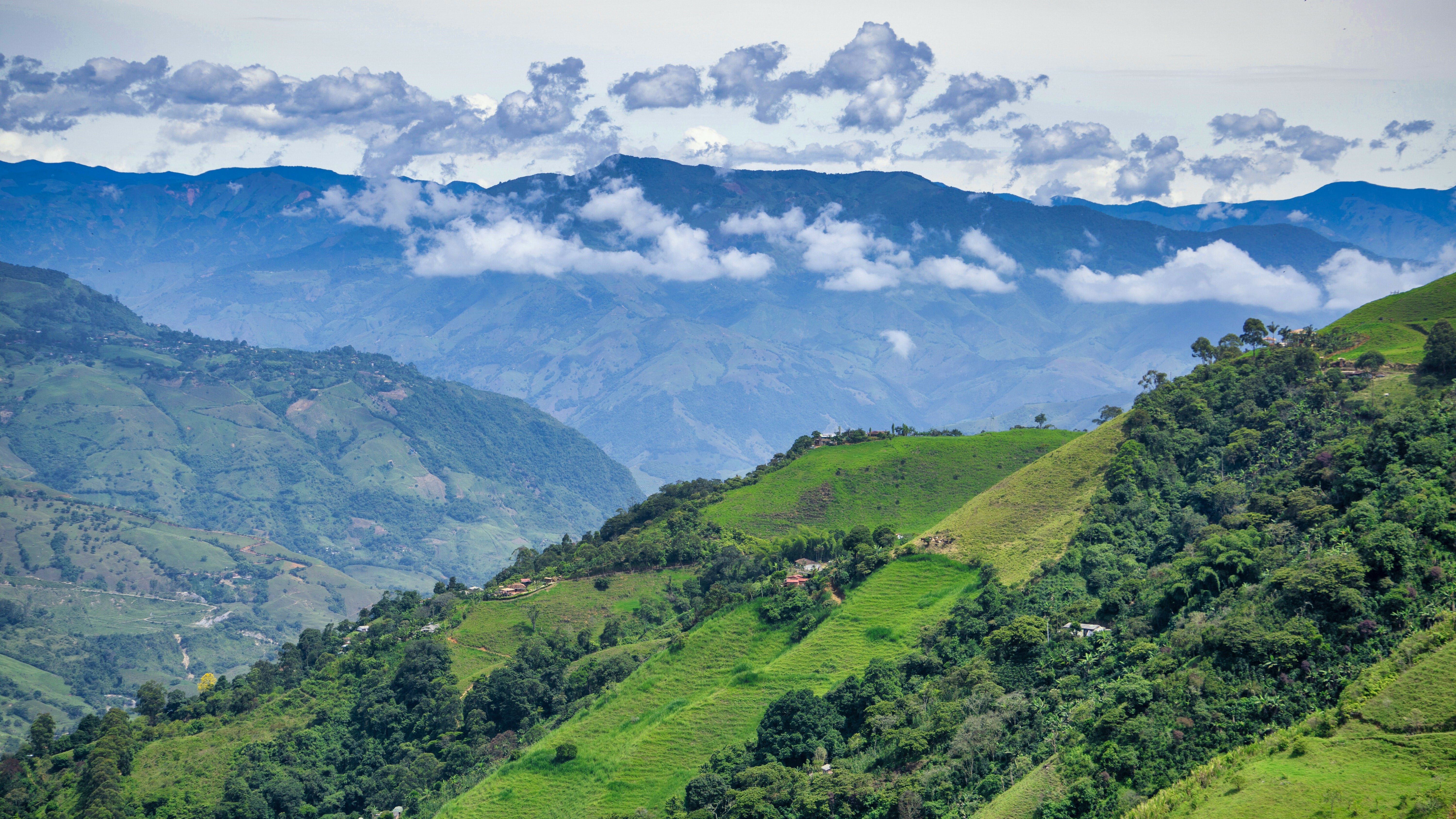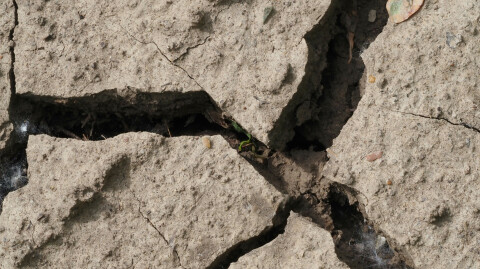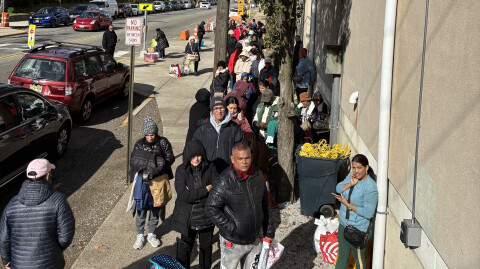TLDR: Whereas Colombia’s cities are thriving and infrastructure projects can be seen everywhere, the Andes towns of the Western Cordillera mountains remain quite vulnerable to guerrilla groups and local crime. Our farm is located on the Cordillera. Read on to hear a bit about our adventures.
We sneaked into the farm without stopping in town for more than a few seconds. I found this strange because we had just traveled seven hours from Medellin to Ituango, the town where I was born, and folks needed a bathroom break and to stretch our legs. I asked no questions because I had a suspicion precautions had been taken to make this trip as below-the-radar as possible. We arrived at the farm, and I instantaneously noticed how much the place had changed over the last 36 years. I left a one-room farmhouse, without electricity, indoor plumbing, telephones, or an indoor kitchen. All these years later, I found an assortment of well-constructed and comfortable buildings with enough space to accommodate 30 to 35 people. There is electricity throughout the large complex, which now powers modern farm equipment, a large and comfortable living room, and all bedrooms. For those with local networks, there are strong internet signals throughout the farm. A modern and large kitchen has been built within the roofed space, which is equipped with modern refrigerators, a freezer, and gas stoves. Indoor plumbing has been built throughout the entire farm, using three different sources of water: our own well-water, town water, and water negotiated with a public works project in exchange for a right-of-way through a sliver of land, at the northern most point of the farm.
Perhaps most impressive is the fact that we now have a closed loop biodigester system that runs throughout most of the farm. In 2014, the University of Antioquia received a generous grant to experiment with organic farming. We were one of two farms in our area chosen for the project. “Organic agriculture is a method of farming that seeks to produce food with minimal impact to ecosystems, animals or humans. It encompasses a number of environmentally friendly practices such as avoiding pesticide use, increasing abundance of species, increasing soil fertility, reducing soil erosion, and reducing energy usage and nitrogen losses from the system.”[1] The closed loop (called “The Biodigester”) is composed of a series of tanks that capture and reuse rainwater, and a loop of tanks that breakdown organic materials. A large tank houses all manure and organic materials, and the product from this tank travels to a second tank where the sludge is mixed with worms from a “worm tank,” also located at the farm. The worms break down the organic material and allow the new material to travel to a third tank where it is mixed with other products (sugarcane refuse, farm soil, water, etc.) to create fertilizer, which is applied to all fields at regular intervals throughout the year. Lastly, the gas generated by the whole process is used for cooking, water heaters, and to share with neighbors. The end result of this closed loop is that the farm has become almost completely self-sufficient. In the words of Cristina, the farm’s cook, “All we buy now is rice and potatoes because they don’t grow around here.”
This process has been so effective over the last six years that the farm now is a major supplier of free food to neighbors and close friends in town. Corn, beans, yucca, plantains, sugarcane, avocados, a multitude of citric fruits (oranges, mandarins, lemons, limes, etc.), bananas, mangos, coconuts, and much more complement the farm-sourced pork, chicken, and even beef production. We even have a large tilapia-farm (a tank the size of an average swimming pool.) Perhaps, most impressive, the farm has an active production of milk and freshly made cheeses and butter, which they supply to a store in town. Now, I want to be clear that this is not a commercial farm. My siblings have truly leaned into the hobby farming concept. Everything produced at the farm is consumed at the farm or by the local neighbors we support. The milk and cheese, and sometimes eggs, which are sent to town are sold below market prices and the money is used to support various community projects.
Life at the farm is busy for the farm hands. Their day starts with milking at 5:00am and ends with the corralling of cattle in the evening, which necessitates the separation of the calves from their mothers for the night. In between, there is sugarcane to be cut for feeding (all animal feed at the farm is organic), fences to be fixed, fields to be fertilized, and fruits, corn, and various vegetables to be harvested. These, among a hundred other chores. For us, the “bosses,” the farm is always fun because the workers make sure we lack nothing. This is very generous of them, but also a testament to their gratitude to my siblings for the way they have been loved and compensated over the years. Their kids wear American brands, salaries are generous, they are free to consume all farm products, and they don’t have micromanaging overseers because most of us live here. So, why were we so concerned about becoming too obvious in town?
Here we arrive at the irony of the whole thing. Although Colombia has achieved great infrastructure advances in the last 30 years, our hometown has been modernized in many significant ways, and the major guerilla groups in the country signed a peace treaty with the government a few years ago, there are still a number of small paramilitary and guerrilla groups that call the Andes mountains their home. The part of the Andes that crosses our farm is called the Western Range and it is currently home to a number of small but quite bloody groups. About five years ago, one of these groups, the ELN, marched into town, kidnapped a number of kids as young as 10 to turn them into guerrilla soldiers, and killed a number of young people who refused to follow them. These memories are still fresh in people’s minds. Since then, several local criminal groups have used people’s fears of the guerillas to dress like them and kidnap local businesspeople for ransom. Most of the times, the ransoms are paid and the people returned, but there have been episodes where the victims have been killed. The official guerrillas retaliate by killing these impostors, but they themselves act like nothing more than street thugs.
Most of the locals of the town have become accustomed to this state of affairs and believe “things are not as bad as people say,” but statistics show a different picture. For tourists, and especially Americans, the area has become dangerous, which explains why my family took such precautions to keep Chris and our daughters safe at the farm. We did have a couple of hours to tour the town, under the supervision of several relatives and friends, on the early morning of New Year’s day. Most of the locals were still asleep and the streets were fairly empty. After this, we boarded the same private bus and returned to Medellin, where life has become much safer and enjoyable. In fact, thousands of Europeans and Americans come to Colombia’s cities for vacation every year. Sadly, the Andes mountains are a different story.
I will write a bit more about my trip soon. In the meantime, I would like to thank the Vestry and the Staff for allowing me this much-needed time of respite.
May our Lord continue to bless you,
Fr. Roman+
[1] Closed-Loop Biodigesters on Small-Scale Farms (https://www.mdpi.com/2073-4441/13/19/2744)





